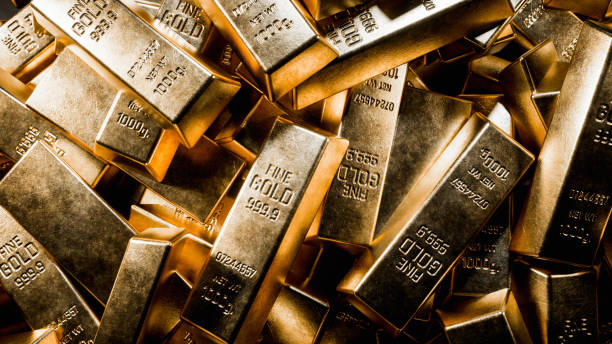Cover

Chapter Outline Part 1: Gold in the Present Day Part 2: The Recent Past (1970s–2000s) Part 3: The Early 20th Century Part 4: Looking Ahead

Chapter Outline Part 1: Gold in the Present Day Part 2: The Recent Past (1970s–2000s) Part 3: The Early 20th Century Part 4: Looking Ahead

Gold’s unique qualities have made it a cornerstone of wealth preservation for centuries, and its importance shows no signs of diminishing. As a hedge against inflation, currency devaluation, and economic instability, gold remains a reliable asset in uncertain times. Its…

Gold transformation over the past century is a testament to its resilience and adaptability in the face of global economic, political, and technological change. From its foundational role in the gold standard to becoming a free-floating commodity and a modern…

New opportunities for investors in gold are emerging as technology reshapes the financial landscape. From gold-backed cryptocurrencies and digital trading platforms to AI-driven strategies and blockchain-based transparency, these advancements are revolutionizing how gold is accessed and traded. These innovations not…

The gold mining industry is increasingly under pressure to address its environmental footprint as the world grapples with the challenges of climate change and sustainability. From energy-intensive extraction processes to the destruction of ecosystems, gold mining faces mounting scrutiny from…

Gold role as a cornerstone of monetary policy and a hedge against economic instability continues to grow, particularly in emerging markets. Central banks in these regions are increasingly turning to gold to diversify reserves, reduce reliance on the U.S. dollar,…

Potential trends in gold investing are shaping the future of this timeless asset, blending tradition with modern innovation. As gold-backed digital currencies gain popularity, decentralized finance (DeFi) integrates gold into its ecosystem, and shifting demand patterns emerge, the ways investors…

The establishment of the U.S. dollar as the dominant reserve currency was a transformative outcome of the Bretton Woods Agreement in 1944. With the dollar pegged to gold at a fixed rate and other global currencies tied to the dollar,…

Gold’s pivotal role in the post-World War II era was instrumental in rebuilding global economies and fostering international cooperation. As the foundation of the Bretton Woods system, gold provided the stability and trust needed to restore confidence in monetary policies…

The Great Depression of the 1930s was a period of unprecedented economic hardship that exposed the limitations of the gold standard and led to dramatic government interventions. Among these, President Franklin D. Roosevelt’s gold confiscation policy stands out as one…

The role of gold during the Gold Standard Era (1900–1933) was pivotal in stabilizing currencies and facilitating international trade. By anchoring the value of currencies to a fixed quantity of gold, this system provided a reliable framework for economic transactions…

Investor behavior during the 2008 Global Financial Crisis revealed critical insights into how markets react under extreme stress. As equities collapsed and financial institutions failed, investors turned to gold and other safe-haven assets to preserve wealth and manage risk. This…